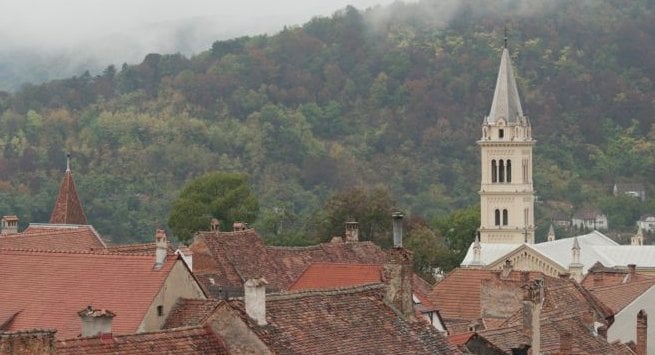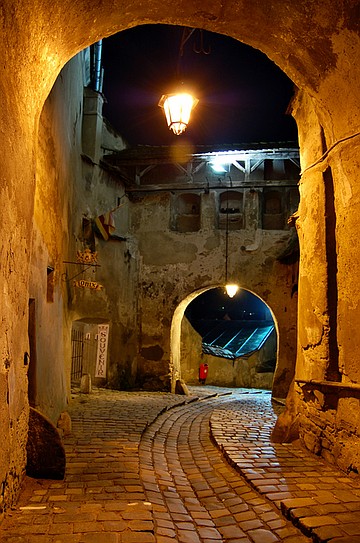 Facebook
Facebook
 X
X
 Instagram
Instagram
 TikTok
TikTok
 Youtube
Youtube

Transylvania, land of Dracula and part of the Austro-Hungarian empire for more than 1,000 years, is today in the isolated region of north-central Romania. It's been said that Transylvania sits on one of Earth's strongest magnetic fields and its people, as a result, have extra-sensory perception.

Sighişoara's castle-topped 12th-century citadel is infamously associated with the legend of Dracula. Complete with torture chambers, the baroque Clock Tower and restored medieval homes and churches, the citadel – a UNESCO World Heritage Site – resembles the set of a horror film.
In the town square, there's a plaque marking the site of beheadings by Vlad the Impaler, who inspired Bram Stoker's classic novel Dracula. You'll find a charming plaza lined with terrace cafes and shops displaying vampire souvenirs.
With its traditional Romanian villages, the beautiful unspoiled mountain scenery of the Bargau Valley in the Carpathians makes an ideal base for hiking, sightseeing or exploring the legend of Dracula.
The passageway of Borgo Pass through the Carpathian Mountains in northern Translvania was made famous in Dracula and is only accessible by car via the town of Tihuta.
Dracula's real castle is the Poenari Castle on the border between Wallachia and Transylvania in the Transylvanian Alps. You climb 1,500 steps (a one-hour walk) to reach the castle, winding through a picturesque forest along the hillside. We walked through the ruins and viewed the torture dungeon where people had been tortured to death during Vlad the Impaler’s rule.
Despite the reminders of a grisly past, we enjoyed a spectacular panoramic view of the Transylvanian Alps.


Transylvania, land of Dracula and part of the Austro-Hungarian empire for more than 1,000 years, is today in the isolated region of north-central Romania. It's been said that Transylvania sits on one of Earth's strongest magnetic fields and its people, as a result, have extra-sensory perception.

Sighişoara's castle-topped 12th-century citadel is infamously associated with the legend of Dracula. Complete with torture chambers, the baroque Clock Tower and restored medieval homes and churches, the citadel – a UNESCO World Heritage Site – resembles the set of a horror film.
In the town square, there's a plaque marking the site of beheadings by Vlad the Impaler, who inspired Bram Stoker's classic novel Dracula. You'll find a charming plaza lined with terrace cafes and shops displaying vampire souvenirs.
With its traditional Romanian villages, the beautiful unspoiled mountain scenery of the Bargau Valley in the Carpathians makes an ideal base for hiking, sightseeing or exploring the legend of Dracula.
The passageway of Borgo Pass through the Carpathian Mountains in northern Translvania was made famous in Dracula and is only accessible by car via the town of Tihuta.
Dracula's real castle is the Poenari Castle on the border between Wallachia and Transylvania in the Transylvanian Alps. You climb 1,500 steps (a one-hour walk) to reach the castle, winding through a picturesque forest along the hillside. We walked through the ruins and viewed the torture dungeon where people had been tortured to death during Vlad the Impaler’s rule.
Despite the reminders of a grisly past, we enjoyed a spectacular panoramic view of the Transylvanian Alps.
Comments